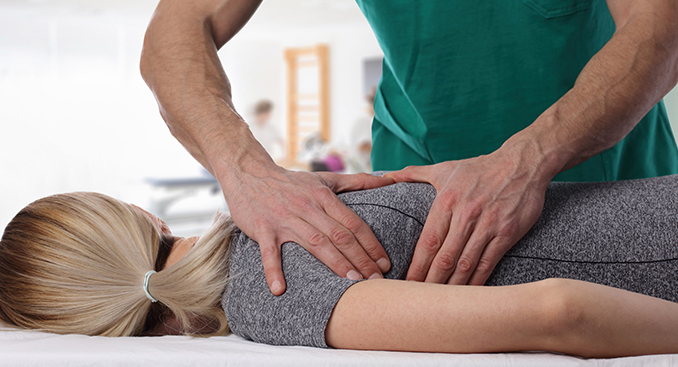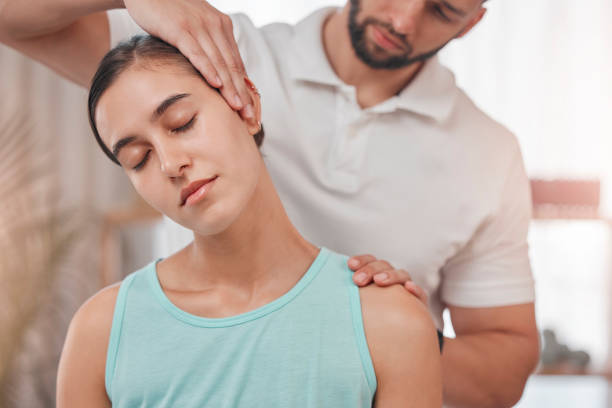Osteopathic physicians are able to identify and treat musculoskeletal problems that cause chronic pain. They can also work with the patient to address their psychological, emotional and social factors contributing to their pain and suffering.
Osteo Ivanhoe is often used to help treat musculoskeletal conditions like back and neck pain, joint pain and carpal tunnel syndrome. But it can also help with breathing problems like asthma and bowel issues like irritable bowel syndrome.

Identifying the Cause
Osteopathy is an approach to healing based on the belief that most diseases, injuries and pain stem from problems in the musculoskeletal system – the bones, muscles, tendons and tissues that make up your body’s structure. DOs study the musculoskeletal system extensively during their education and have special training in how the parts of your body work together, including the nerves that connect to them.
Your osteopathic physician will use manual techniques to gently manipulate your bones, soft tissue and joints. This includes osteopathic manipulative treatment (OMT), which involves using gentle pressure to help relieve tight muscles. When you hear a ‘popping’ sound during an OMT session, this is caused by gas bubbles popping as the muscles release their tension.
While osteopathic therapy is often associated with treating back and neck pain, it can address many other health concerns. For instance, osteopathic techniques can improve respiratory and bowel conditions like asthma and irritable bowel syndrome. They can also ease breathing difficulties that occur with chronic obstructive pulmonary disease (COPD), such as emphysema and bronchitis.
Osteopathy can also help with chronic gynecological issues, such as menstrual pain and ovarian cysts. In addition, it is used to treat cardiovascular problems such as high blood pressure. In fact, osteopathic manipulation can lower blood pressure by improving the flow of blood to the kidneys and balancing the way your body uses hormones like adrenaline and cortisol.
Relieving Pain
Osteopaths use their hands to stretch, massage and improve the movement of your joints, muscles and bones. This is called osteopathic manipulation treatment (OMT). It’s the part of osteopathy that most people associate with the cracking sound you might hear during a session – this is caused by a sudden change in pressure that releases gases from fluid around your joints.
Your osteopath will also pay close attention to how your body works as a whole. This is because osteopathic medicine considers that your musculoskeletal system affects and influences every other part of your body. For example, if you suffer from knee pain, an osteopath will work to address imbalances in your hips or back that might be causing the knee joint problems.
Managing neck pain is another common condition that responds well to osteopathic treatment. Osteopaths work to release muscle tension in your neck and shoulders that might be causing the pain. They may also prescribe strength and rehabilitative exercises to help manage the pain long term.
Sciatica is a painful condition that results from an injured disc in the lower spine pressing against spinal nerves. Osteopathy can relieve sciatic pain by releasing the pressure on the nerves and helping your body heal the structure that’s causing it. They might also work with you to reduce stress, which can contribute to the condition.

Reducing Inflammation
Osteopathy can reduce inflammation by reducing the strain on affected tissues. This will ease pain and stiffness by promoting the flow of blood around the affected areas and helping to release natural hormones that help to reduce inflammation.
The osteopath will also be able to guide you with lifestyle management such as diet and exercise. This will help with the condition, and also prevent it from coming back or getting worse. For example if you suffer from Gout, an osteopath will be able to help by advising what foods to avoid and recommending treatments such as massage to support the joints.
Counterstrain is a treatment technique used by osteopaths to reduce muscle tension and improve mobility. The osteopathic physician finds the tender point of a muscle and then applies a position that is mildly uncomfortable and in the opposite direction of the originating strain. This inhibits the strain reflex and allows the muscles to lengthen.
Research shows that osteopathic manipulations can have a positive impact on the Central Nervous System, helping the body to shift from the Sympathetic “Fight or Flight” Response into the Parasympathetic (“Relax and Digest”) Mode. This has a healing effect on the body and is an alternative to pharmaceuticals that can have adverse side effects including addiction, liver toxicity, kidney dysfunction and heart problems.
Managing Stress
Stress can lead to a series of physical symptoms like muscle tension, stiffness and headaches. Osteopathy can help manage these symptoms by supporting the nervous system to relax.
Osteopaths use hands-on manipulation techniques to detect imbalances in the body’s fascia, joints and nerves. They then use gentle pressure and movement to support the body to release tension and balance the ligamentous tension around a joint, thereby reducing pain and inflammation.
The osteopathic philosophy focuses on the whole body, which means that osteopaths take your full medical history and examine every part of your body. They do this to make sure that they have ruled out any tissue damage and pathological changes, which could explain your symptoms.
They also keep a watchful eye for any interrelationships between your body parts, for instance, if you have sciatica, the structure causing the pain might be compressing your ribcage. Osteopaths may be able to alleviate this tension, which will ease your sciatic pain.
They can do this by doing rib-stretching exercises to reduce the tightness and improve breathing. This will also promote relaxation, which can relieve the physical stress that is contributing to your sciatic pain.